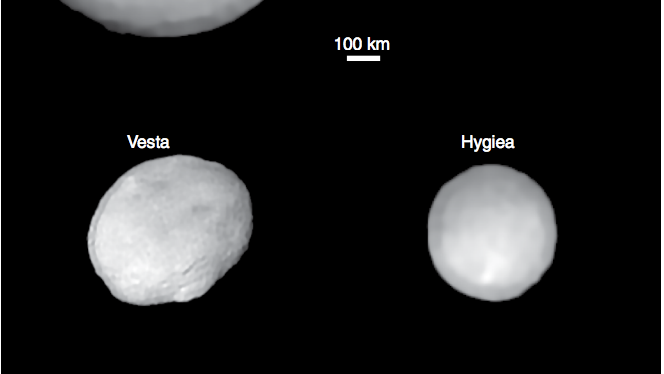Our Solar System’s Family of Five Dwarf Planets Just Grew By One

"Hearst Magazines and Yahoo may earn commission or revenue on some items through these links."
Astronomers have concluded that asteroid Hygiea is probably a dwarf planet after all.
Images of Hygiea showed that the dwarf planet is round, a key requirement of becoming a dwarf planet.
At roughly 267 miles across, it will become the smallest of the Solar System's five dwarf planets.
Hygiea was initially thought to be a large asteroid, but new analysis of observations made by Chile’s Very Large Telescope revealed insight into the celestial body. It’s finally met all the requirements needed to become a dwarf planet.
Dwarf planets have four key requirements:
They must orbit the sun.
They must be round.
They can’t be a moon.
Their orbital paths can’t be clear of debris, like those of the planets in our solar system.
The new images revealed that Hygiea is, in fact, a round ball of rock, a team of researchers led by astronomer Pierre Vernazza of the Laboratoire d’Astrophysique de Marseille in France reported October 28 in Nature Astronomy. Now, its status as a dwarf planet is official.
At a whopping 267 miles across, Hygiea would be the smallest dwarf planet to orbit the sun. The researchers saw—or rather, didn’t see—something else that surprised them. A large group of asteroids follows Hygiea along its orbit. Vernazza and his team expected to find a giant impact crater on Hygiea’s body, which would have pointed to a two-million-year-old collision that formed all of these rocky companions. But the giant gash wasn’t there. Instead, they now believe that, after the crash, all of the bits of rocky rubble gathered back together to form Hygiea’s body.
There are currently five dwarf planets in the solar system. Eris, Makemake, Haumea, Pluto and Ceres. The largest object in the asteroid belt and smallest of the dwarf planets, Ceres, was discovered in 1801. Pluto, which is tinier than our moon, was demoted from planetary status in 2006. Pluto super-fans have launched several efforts to return the dwarf planet to its once-celebrated status—none have been successful.
Source:
You Might Also Like

